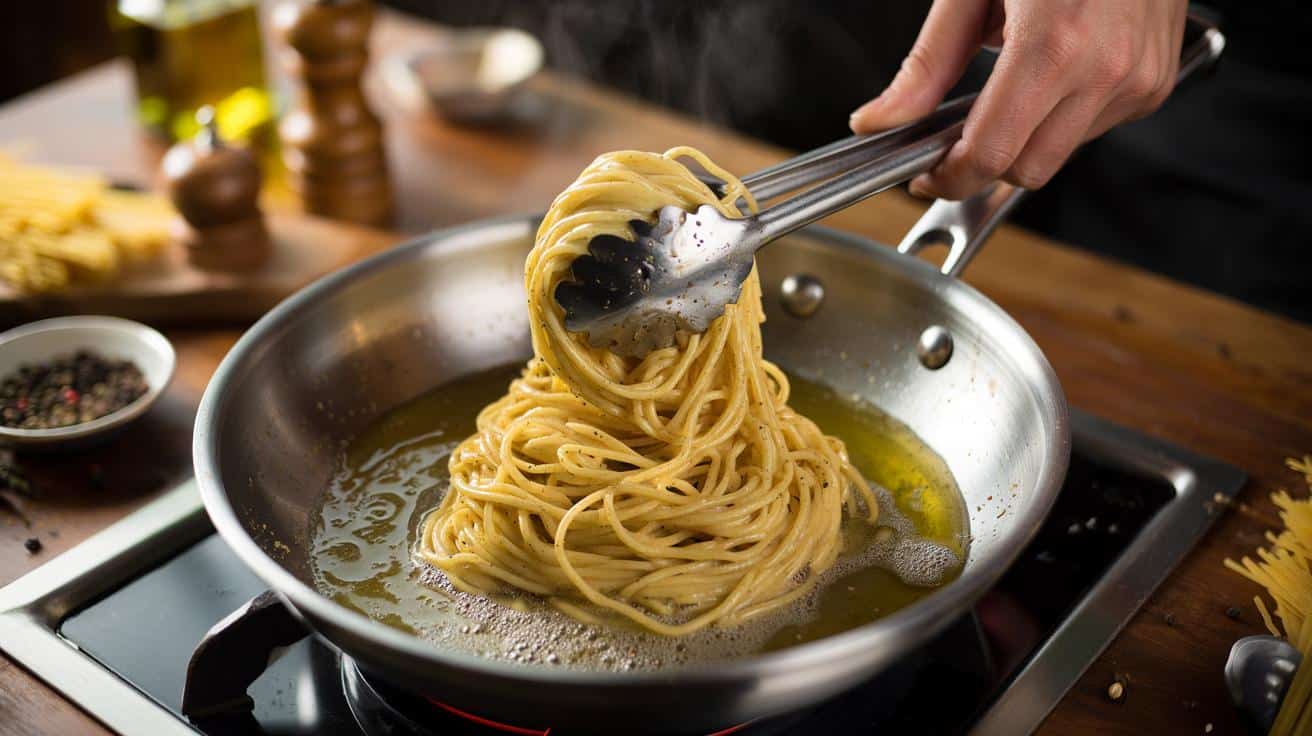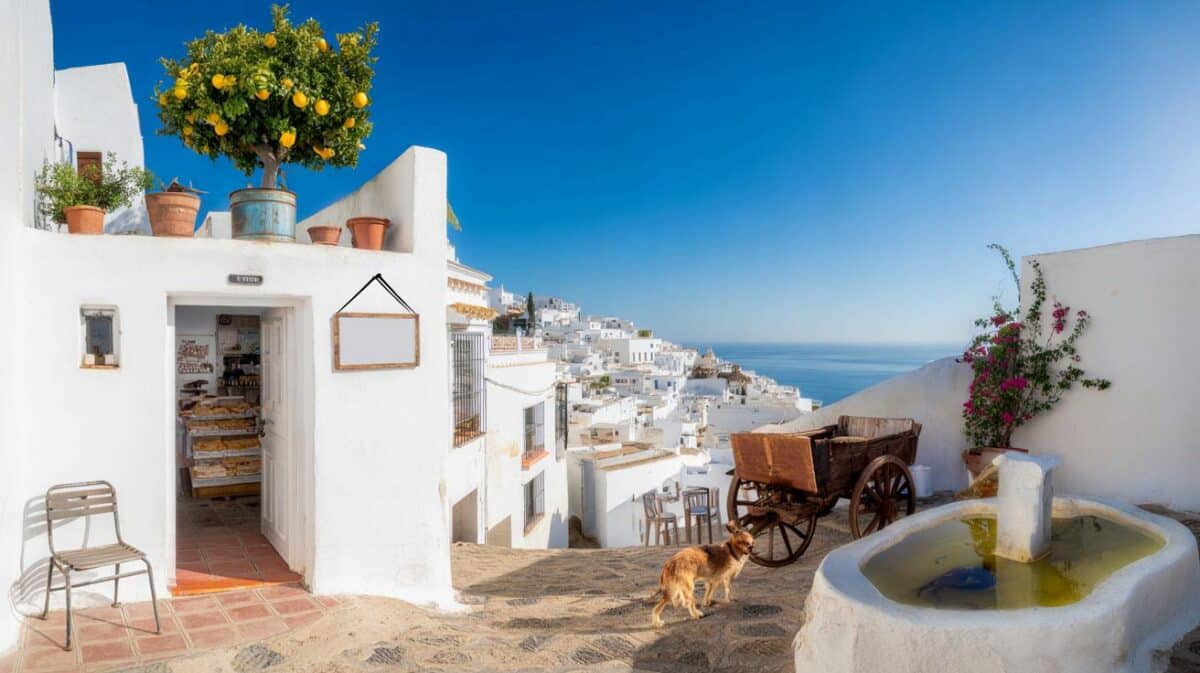Cheap pasta can taste flat, grey, a bit sad. The fix many chefs swear by costs less than a bus fare and sits at the back of most cupboards. A 3p hit that wakes the whole bowl up.
We’d overcooked supermarket penne and dumped in jarred sauce. My friend, a cook who finishes shifts with burns and stories, grabbed a pan and a pepper mill. Two minutes later, the same pasta tasted like a night out.
He didn’t add truffles. He didn’t add cream. He toasted black pepper, bloomed it, and let the pasta drink it in. The pan suddenly smells like a trattoria corridor at midnight. A tiny, proud moment follows, the kind that makes a tired kitchen feel like a room in Rome.
We’ve all had that moment when dinner feels too thin to carry the day. Here’s the quiet fix chefs trust, hiding in plain sight. It costs about 3p.
The 3p ingredient that flips cheap pasta from flat to glossy
Black pepper is the move. Not a sprinkle at the end, not the dusty shaker. Freshly cracked pepper, warmed and coaxed, changes texture, aroma, and mood. **Black pepper, treated properly, is the cheapest flavour upgrade in the pasta universe.**
I watched a Roman-born chef in a cramped Soho kitchen work this like a party trick. He cracked pepper into a dry pan, shook it until the room smelled piney and warm, then hit it with a ladle of starchy pasta water. The pepper fizzed. The liquid turned tea-coloured. Two quid spaghetti slid in, and the sauce climbed it like silk. In the till, cheese is the pricey bit. The pepper? About 3p a portion.
There’s a reason it works. Crushing releases pepper’s oils; heat unlocks the citrusy, woody parts you never taste raw. Piperine adds a gentle sting, the kind that wakes tomato sauce without shouting. Fat carries those aromas, starch binds them, and salt sets the stage. Pepper is the small hinge that swings the big door.
How to use the pepper trick tonight
Here’s the simple rhythm. Crack a teaspoon of whole peppercorns or grind medium-coarse. Toast it in a dry pan on medium until fragrant, 30–60 seconds. Add a small knob of butter or a glug of olive oil, then one ladle of pasta water. Let it thicken slightly. Toss in just-cooked pasta and swirl. Finish with grated pecorino or Parmesan if you have it, or nothing if you don’t. **Toast, bloom, emulsify — that’s the whole trick.**
A few easy wins. Use whole peppercorns you crack yourself; preground tastes tired. Keep the heat friendly, not fierce, or the pepper goes bitter. Add pasta water gradually; you’re building a glossy coat, not soup. If cheese clumps, pull the pan off the heat and loosen with more water. Let’s be honest: nobody does that every day. On a Tuesday, the pepper alone still lifts the bowl.
Think of pepper as your flavour dial, not a garnish. Start small, taste, add more. Fold it into tomato sauce, creamy mushroom, tinned tuna, or plain buttered noodles for a late shift supper.
“Pepper isn’t background noise,” says Marcus, a head chef who’s closed more services than most of us have opened jars. “Toast it, and you’re cooking with perfume.”
- Best grind: medium-coarse; too fine turns sludgy.
- Best fat: butter for roundness, olive oil for green bite.
- Best pairing: pecorino if you want Roman thunder, Parmesan for mellow depth.
- Shortcut: smash peppercorns in a tea towel with a mug. No mill needed.
- Extra lift: twist of lemon zest at the end for a bright, restaurant-y finish.
Why this tiny tweak feels like eating out
Restaurant pasta feels richer because cooks run little experiments in the pan. Heat, spice, fat, and starch meet at the right moment, not five minutes before. Pepper is the conductor. You taste edges and warmth, not just salt. The sauce clings. The noodles shine instead of sulk. Small changes stack up like applause.
There’s a pocket of calm that arrives when you do it once and it works. Your eyes say “budget” but your tongue says “someone paid attention.” That’s what you buy when you eat out. Not linen. Not a wine list. Care. This 3p ingredient is care in tiny, black confetti form. **Great pasta is about attention, not money.**
Try it on leftovers. Reheat pasta gently with a splash of water, add toasted pepper and a dab of butter, and the whole thing wakes again. If you cook for kids, start lighter and build. If you cook for yourself, go reckless and crack a little more. The pan will tell you when it’s right.
Cheap pasta doesn’t have to apologise. A teaspoon of proper pepper turns it from background dinner to a small, memorable thing that happened in your kitchen. Share the trick with someone who claims to “hate pepper” and watch their eyebrows move. The best upgrades are the ones you feel before you can name them.
| Point clé | Détail | Intérêt pour le lecteur |
|---|---|---|
| Toast the pepper | 30–60 seconds in a dry pan releases citrusy, piney aromas | Transforms “flat” into fragrant without extra cost |
| Bloom with fat and pasta water | Add butter/olive oil and a ladle of starchy water to create a glossy emulsion | Gives that restaurant cling on a budget |
| Grind fresh, aim medium-coarse | Whole peppercorns cracked just before cooking taste brighter | 3p delivers more flavour than pricier add-ons |
FAQ :
- Is black pepper really the “3p ingredient”?Yes, when you buy whole peppercorns, a teaspoon works out at roughly 2–4p in UK supermarkets. The improvement per penny is huge.
- Can I use preground pepper?You can, but it won’t sing. Preground loses aroma fast. If it’s all you’ve got, use more and toast gently for a shorter time to avoid bitterness.
- What if I don’t have cheese?Still do the pepper trick. Butter or olive oil plus toasted pepper and pasta water makes a simple, glossy sauce. Add a squeeze of lemon or a splash of soy for extra depth.
- Will this work with jarred tomato sauce?Yes. Warm pepper first, bloom it, then stir in the jar sauce and a splash of pasta water. The sauce tastes rounder, less metallic, more like it simmered longer.
- How do I stop cheese clumping in cacio e pepe?Pull the pan off the heat, toss pasta with pepper sauce, then add finely grated cheese little by little with more warm pasta water. Keep it creamy, not hot.










Tried this with sad jarred sauce and wow — toasting the pepper then hitting it with pasta water made it silk. Who knew 3p could do that?
3p? In this economy, peppercorns must be on clearance. Jokes aside, does preground work if I toast it real quick, or will it just taste burnt?